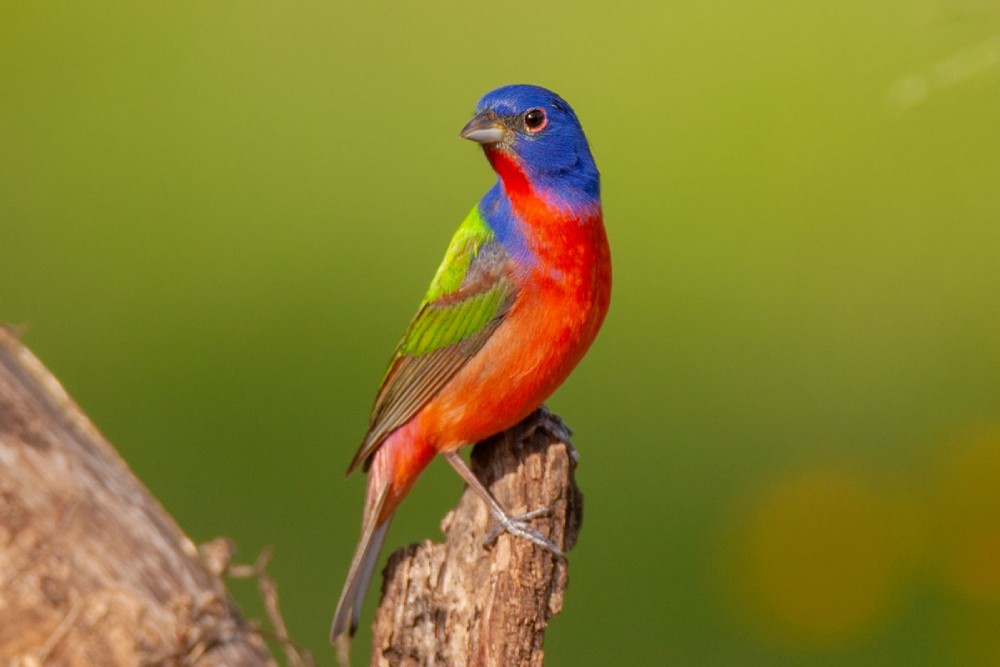Appearance and Identification
The Painted Bunting is renowned for its spectacular coloration, particularly in males. Adult males boast a kaleidoscope of colors: a deep blue head, green back, red underparts, and a striking mix of hues that make them appear almost surreal. Females and juveniles, in contrast, exhibit more subdued tones, primarily olive-green and yellow, which provide excellent camouflage in their natural habitat.
This sexual dimorphism not only aids in the identification of the species but also plays a crucial role in their breeding behavior. Males utilize their brilliant plumage to attract females and assert dominance over territories, while the more muted tones of females help them remain inconspicuous while nesting.

Habitat and Distribution
Painted Buntings have a specific range within the United States and parts of Central America. They are typically found in two main populations: the eastern and western populations.
- Eastern Population: Found along the southeastern coast of the United States, from North Carolina to northern Florida, and occasionally further inland.
- Western Population: Ranges from northern Mexico through Texas, Oklahoma, Arkansas, and Louisiana.
Their preferred habitats include thickets, woodland edges, and brushy areas near water sources. During the breeding season, they favor areas with dense vegetation that provides cover and abundant food sources. In the winter, they migrate to Central America and the Caribbean, where they inhabit similar environments.
Behavior and Diet
Painted Buntings are primarily granivorous, feeding on a variety of seeds and grains. However, their diet is quite diverse and can include insects, particularly during the breeding season when the need for protein increases. This dietary flexibility allows them to thrive in different habitats and conditions.
These birds are known for their elusive and shy nature. Males are more conspicuous due to their bright plumage and singing behavior, especially during the breeding season. Their song is a high-pitched, musical trill that serves to attract females and deter rivals. Females, on the other hand, are more secretive, often staying hidden in dense foliage.
Painted Buntings are territorial, with males defending their breeding grounds vigorously. They establish and maintain territories through vocal displays and occasional physical confrontations. Breeding typically occurs between May and August, with females building nests in low shrubs or trees, where they lay 3-4 eggs per clutch.
Reproduction
The reproductive cycle of the Painted Bunting is fascinating and involves intricate behaviors and adaptations. Males arrive at the breeding grounds before females to establish territories and begin their courtship displays. These displays include singing from prominent perches and showcasing their vivid plumage through various postures.
Once a female selects a mate, she constructs a nest, often in a well-hidden location to avoid predators. The nest is a small, cup-shaped structure made from grasses, leaves, and spider webs, providing a secure environment for the eggs and, later, the chicks.
Incubation lasts about 11-12 days, primarily by the female. After hatching, both parents participate in feeding the chicks, which fledge about two weeks after hatching. The timing of breeding is synchronized with peak food availability, ensuring sufficient resources for the growing chicks.
Conservation Status and Threats
Despite their beauty, Painted Buntings face several threats that have led to declines in their populations. Habitat loss due to urbanization, agriculture, and deforestation is a significant concern, as it reduces the available breeding and wintering grounds. Additionally, illegal trapping for the pet trade poses a severe threat, particularly in parts of their range where they are highly sought after for their colorful plumage.
Conservation efforts are underway to protect Painted Buntings and their habitats. These efforts include habitat restoration projects, legal protections, and public education campaigns to raise awareness about the importance of preserving this species. Organizations such as the American Bird Conservancy and the National Audubon Society are actively involved in these initiatives, working to ensure the survival of this extraordinary bird.
Birdwatching and Ecotourism
The Painted Bunting’s striking appearance makes it a favorite among birdwatchers. Birding tours and ecotourism ventures often highlight regions where these birds are commonly found, offering enthusiasts the chance to observe and photograph them in their natural habitats. Responsible birdwatching practices are essential to minimize disturbance to the birds and their environments.
For birdwatchers hoping to catch a glimpse of the Painted Bunting, early morning and late afternoon are the best times. These periods coincide with their most active feeding times, increasing the likelihood of sightings. Binoculars and a good field guide are indispensable tools for birdwatchers aiming to spot and identify these colorful birds.
Conclusion
The Painted Bunting is a true gem of North American avifauna. Its dazzling plumage, fascinating behaviors, and the challenges it faces in the wild make it a subject of great interest and importance. Through concerted conservation efforts and responsible ecotourism, we can help ensure that future generations continue to marvel at the beauty and wonder of the Painted Bunting. So, as we work to protect this species and its habitats, we contribute to the broader goal of preserving biodiversity and the health of our natural ecosystems.









